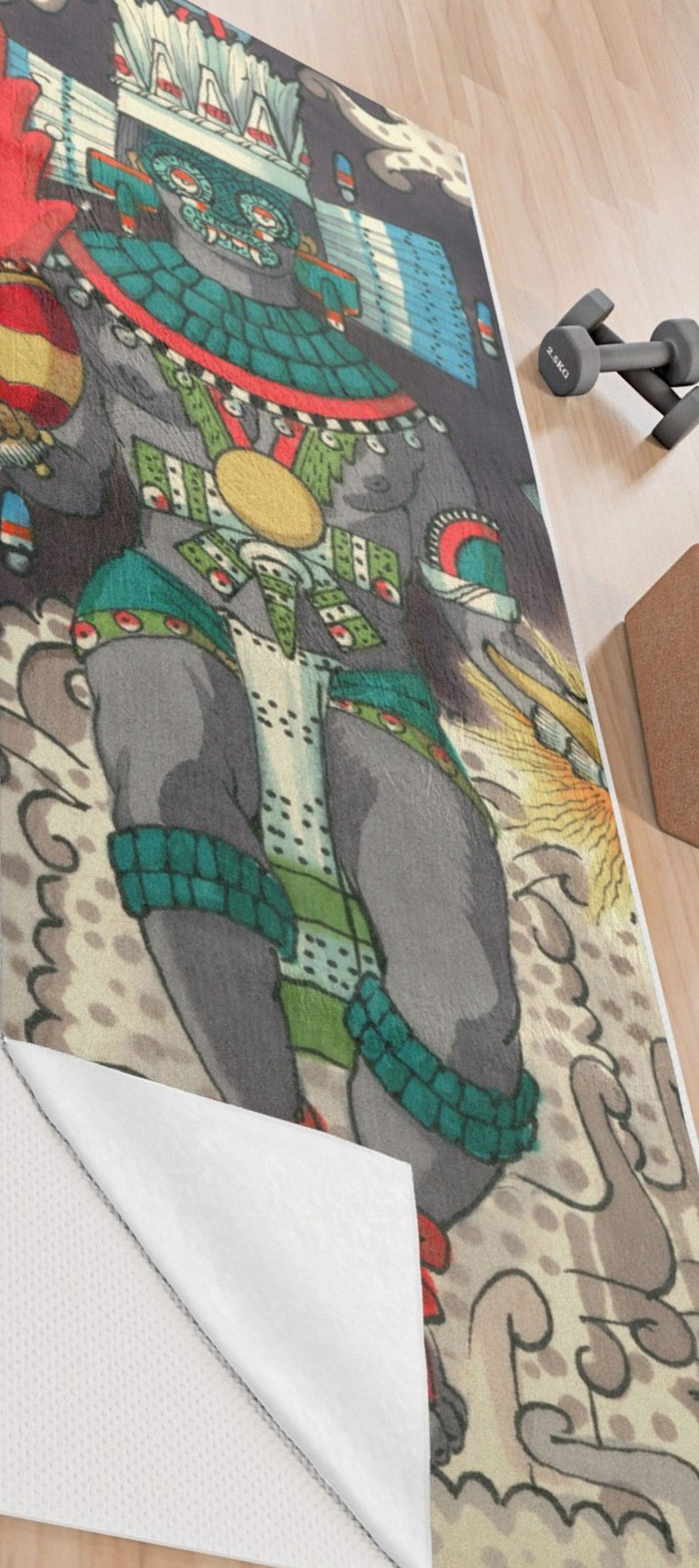
In order to gather comprehensive information and to be able to have a diagnosis about yoga practitioners in Latin America, in 2018 Adrián Muñoz prepared a survey. This open survey has been available since 2019 and is always available to be answered or revised. During 2020, conducting the survey was disrupted and, consequently, there was little increase in the number of respondents. As of October 2021, 83 respondents from ten different countries have answered this survey.
The general objective is to canvass the current state of yoga practice in Latin America, to measure the pulse of the most recurrent currents in the region and to have an overview of the most relevant demographics. Preliminarily, we can point out some important characteristics and patterns that emerge from the survey, although this is an ongoing work.
Thus, for example, it is noteworthy that the female population has been considerably larger in all the cuts that have been made in the survey: practitioners that identified as women were 53 (63.86%) to 30 who identified themselves as men (36.14%) in the most recent cut-off.
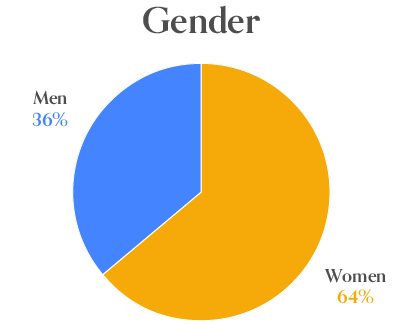
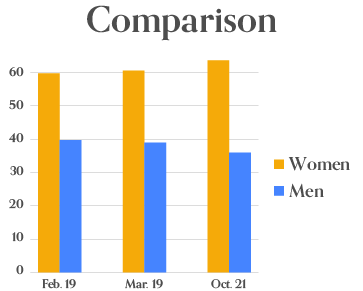
Likewise, hathayoga and the Vinyasa system emerged as two of the most practiced styles: out of a total of 192 responses, 54 identified the hatha style as the most popular yoga modality, followed by Vinyasa with 31, Iyengar with 28 and Ashtanga with 25. This was followed by Vinyasa with 31, Iyengar with 28 and Ashtanga with 25. In addition, 26 responses chose the option "Other"; this group indicated styles or practices as varied as: ISKCON, Restorative Yoga or Yoghism. It should be noted that, in this question, people could choose more than one style.
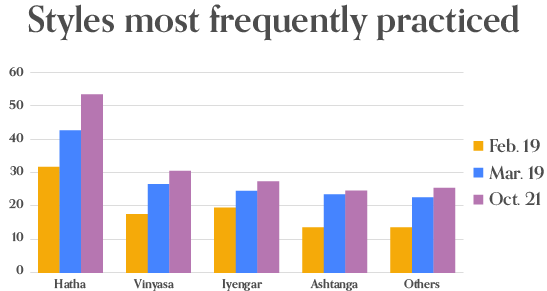
The breakdown of religious belonging is of interest. In the most recent cutoff, 43 respondents reported that they did not profess any religion, while 40 said they did. Among the latter, the preponderant religious majority was Catholic Christians, with half of the responses. However, 57 responses were collected to identify religious beliefs, indicating that several people accept the coexistence of religious practices. Among those who responded (9) with the option "Other", two indicated "yoga" as a religious belief or practice. It is interesting to consider the ways in which individuals negotiate their personal practices, cultural heritages and spiritual environments in a globalized world. Although further research is needed, it is possible that in urban environments there is a higher incidence of a coexistence of different religious views.
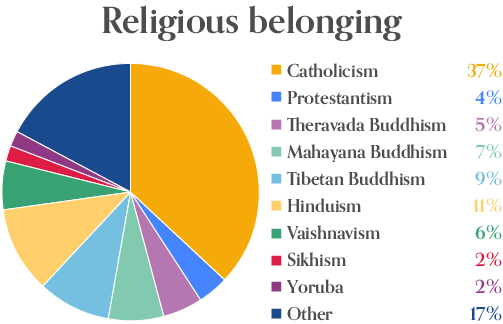
In terms of dietary habits, there is a trend towards diets without meat consumption, but without greatly surpassing its counterpart. Adding those who identified themselves as vegetarians or vegans, we have 48.19%, compared to 43.37% who recognize themselves as omnivores or carnivores. The remaining percentage ("Other") included people who either followed an "ayurvedic" diet or consumed fish, for example.
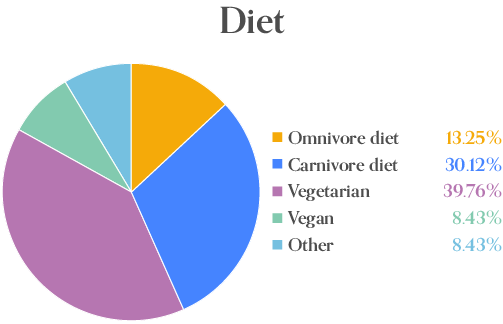
However, we believe that several of these data - in particular the incidence of yoga styles or modalities - can change radically depending on the origin of the survey participants and the data collection mechanisms. In any case, we note a preference for postural styles, i.e., those that confer special importance to physical posture techniques, or āsana.
The following three partial cuts of the survey are available to interested parties (in Spanish):
It should be noted that, although the data are illustrative and very possibly reflect a generalized reality of practice, the survey-diagnosis (link in Spanish) has only been applied online, which inevitably implies a bias in the information gathered. It is in no way intended to replace tools with more professional statistical methodologies and with greater scope in different social groups.
If you wish to participate with the survey-diagnosis, your collaboration will be very useful to us and we would appreciate your time. If you have already answered it, there is no need to do it again and we thank you.
A complementary diagnostic of our analysis was the questionnaire that Ricardo Perez conducted in his research focused on the Roma Norte neighborhood in Mexico City between 2020 and 2021. In this questionnaire, the tendency shown by the survey-diagnosis in terms of gender distribution was confirmed: out of a total of 42 respondents, 24 identified with the male gender and 18 with the female gender. On the other hand, hathayoga was markedly the most recurrent style in this survey: 16 in total, followed by Vinyasa and Kundalini with 8 practitioners each; the rest of the indexed styles counted between 1 and 3 respondents. Responses were recorded here for some modalities that were not reflected in the survey-diagnosis, such as laughter yoga or yoga-aerobics. Finally, it should be emphasized that, unlike the diagnostic survey, this sampling was carried out directly and in person, albeit with several obstacles due to the health emergency caused by SARS-CoV-2.
Our pending tasks are, on the one hand, to have larger samples of both the survey and the questionnaires and, on the other hand, to carry out a more in-depth analysis and interpretation of the statistics produced by both tools.


Alberto Allende
Pedro Urbano
Designed by Jannette Ramírez Arámburo in LimeSurvey
All photographs and images in the Gallery, friezes and banners are mostly courtesy of Adrián Muñoz, and some provided by Borayin Larios. Some exceptions are:
We would like to give due credit to the owners of the images we have used in this site. If you own rights to any of these, please contact us and we will proceed accordingly.